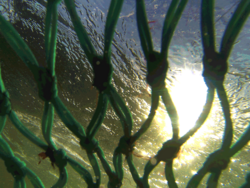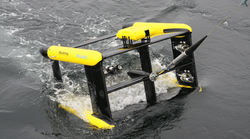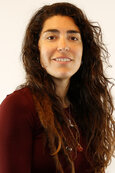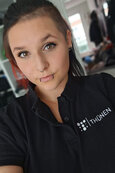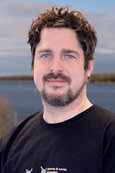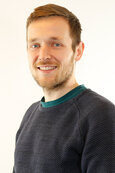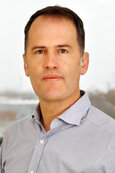Fishery will always have an impact on the marine environment, but we can try to minimise the impact as much as possible. At the same time, fisheries must not only be ecologically sustainable, but also economically sustainable. Technical innovations play a prominent role in this.
The aim of the Fisheries and Survey Technology working group is therefore to develop and test technical innovations for various fisheries that enable sustainable fishing. This applies to beam trawling in the North Sea (for sole and crab) as well as to other trawl fisheries and passive fishing with gillnets. A particular challenge is the reorientation of European fisheries policy with the introduction of a ban on discards in European waters (Field of Activity: Fisheries Management). More than ever, this requires more selective gears in which only the species and sizes desired and marketable by the fisherman are caught, or alternative fishing methods that help reducing the impact on the seabed or avoid bycatch of seabirds or sea mammals.
At the same time, fuel consumption and sorting effort on board are to be reduced to make fishing more economically sustainable as well. In addition to technical solutions for fishing, the working group supports the sea-based work of the fisheries institutes with the maintenance, development and operation of various technical devices for collecting marine data. This includes gear sensor systems, measuring systems, various remote-controlled underwater vehicles, as well as underwater observation technology.
- 0
Santos J (2024) Cruise report FRV "Solea" cruise 811, 14.-29.09.2022. Rostock: Thünen Institute of Baltic Sea Fisheries, 33 p
- 1
Björner M, Furkert F, Hermann A, Wagner R, Neubert S, Naumann M (2024) Evaluation of low-cost hydrographic sensors for increased monitoring density in coastal oceans. In: 2024 IEEE Sensors Applications Symposium: July 23-25, 2024, Naples, Italy; IEEE SAS 2024 Symposium Proceedings. Piscataway, NJ, USA: IEEE, DOI:10.1109/SAS60918.2024.10636439
- 2
Yochum N, Karlsen J, Senko JF, Wang JH, Melli V, Geraci ML, Utne-Palm AC, Breen M, Cuende E, Bayse SM, Somerville J, Hermann A, Edridge A, Mackenzie E K, Ljungberg P, Chladek J-C, Opstal M van, Watson D, Lomeli MJM, Oliver M (2024) Guidelines for evaluating artificial light to mitigate unwanted fisheries bycatch. Rev Fish Sci Aquacult 32(4):612-656, DOI:10.1080/23308249.2024.2359417
- 3
Hermann A, Furkert F, Björner M, Naumann M, Stepputtis D, Gag M, Klein S (2024) HyFiVe: hydrography on fishing vessels ; A new monitoring system enables cost effective and scalable ocean monitoring. J Applied Hydrography(129):12-18, DOI:10.23784/HN129-02
- 4
Noack T, Berg F, Kindt-Larsen L (2024) Length matters: Effects of fishing gear and fishing behavior on the catch efficiency of demersal seines. Heliyon 10(18):e37953, DOI:10.1016/j.heliyon.2024.e37953
- 5
Kindt-Larsen L, Noack T, Brooks ME, Kroner A-M, Glemarec G (2024) Pearls are not just for girls: Plastic spheres do not interfere with target catches in a set net fishery. Fish Res 276:107032, DOI:10.1016/j.fishres.2024.107032
- 6
Bak-Jensen Z, Herrmann B, Santos J, Stepputtis D, Melli V, Feekings JP (2024) Size selectivity of flatfish in trawl codends. Aquacult Fisheries: Online First, Oct 2024, DOI:10.1016/j.aaf.2024.10.001
- 7
Kammann UKR, Aust M-O, Lewin W-C, Nogueira P, Panten K, Sell AF, Stepputtis D, Strehlow HV, Weltersbach MS, Wysujack K (2024) Umweltkontamination: Müll in deutschen Meeresgebieten. Braunschweig: Johann Heinrich von Thünen-Institut, 6 p, Thünen à la carte 13, DOI:10.3220/CA1701080947000
- 8
Hermann A, Stepputtis D, Furkert F, Björner M, Naumann M (2023) Hydrography on fishing vessels - a feasability study leads to an open source development. In: Proceedings of the 15th international workshop on methods for the development and evaluation of maritime technologies (DEMat), 12.-15.09.2022, Rostock, Germany. pp 91-101
- 9
Lansley J, Sala A, Stepputtis D, Brcic J, Einarsson HA, Feekings JP, Glemarec G, Hermann B, Kindt-Larsen L, Krishnan P, Ljungberg P, Melli V, Mytilineou C, Noack T, Perez Roda A, Richardson K, Yochum N (2023) ICES-FAO Working Group on Fishing Technology and Fish Behaviour (WGFTFB). Copenhagen: ICES, ix, 317 p, ICES Sci Rep 5(83), DOI:10.17895/ices.pub.24080889

![[Translate to English:] [Translate to English:]](/media/_processed_/d/7/csm_Startseite-OF_03_c0dfd6e750.png)
![[Translate to English:] [Translate to English:]](/media/_processed_/a/3/csm_20181116-151457-Stella-Jerome-Fischfalle-Warnem%C3%BCnde-Dorsche-im-Netzk%C3%A4fig-5691_heller_3050c72fa2.png)




